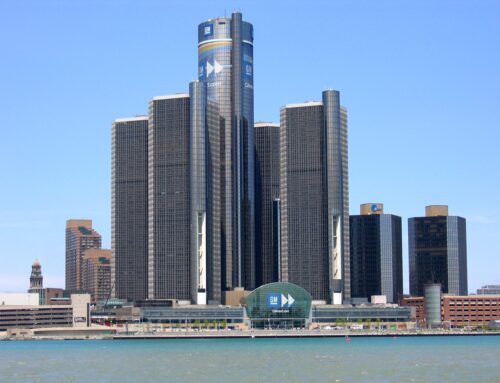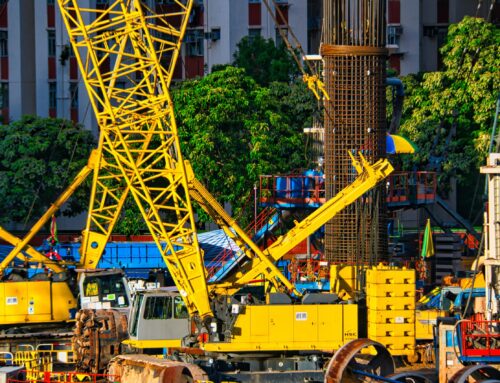Description and Details
In 2011, Ethiopia announced a plan to build hydroelectric power on the Blue Nile River. The dam is called the Grand Ethiopian Renaissance Dam (GERD), and its construction will be completed by the Ethiopian Electric Power Corporation (EEPCO). Once built, the mega hydroelectric power plant will be the largest hydroelectric power station in Africa and the 10th largest in the world. It’ll have 13 turbines with a 5 GW electricity generation rate.
This mega project has great importance to Ethiopia. As the fastest developing country in the world, the dam symbolizes the country’s development and could further lift Ethiopia out of poverty. The electricity generated in GERD will exceed the country’s capacity, and the energy surplus can be exported to other countries, like Sudan and Kenya, to bring further profits to Ethiopia. Additionally, electricity could be used to upgrade the agricultural and industrial sectors, increasing the productivity and quality of products.
To Ethiopia, there is nothing wrong with the project. On the contrary, Egypt has extreme complaints about it as the dam poses a threat to water security. While Ethiopia claims the dam will only be used for power generation, GERD will have a reservoir of 74 giga cubic meters. Ethiopia wants to fill it in three years, with completion in 2023, but Egypt requested more than a decade filling period. Compared to the river’s natural flow, the reservoir may reduce the water flowing downstream. With 90% of Egypt’s freshwater coming from the Nile River, any possible water insecurity induced by the dam will be devastating to Egypt. With most of the Egyptian population living along the Nile, drought will not only effect the Egyptian economy, but also the daily lives of the community. While Egypt does have a mega dam called Aswan Dam on the Nile, having two mega-dams on the Nile poses challenges in water usage between the two countries. Currently, these two dams have no agreements on water sharing.
Historically, Egypt has had sole control over the Nile River. In 1929, Egypt signed a treaty with Britain, where Egypt’s right to the Nile was recognized, and it owns the right to veto any construction projects on the Nile. Moreover, in 1959, Egypt and Sudan signed a treaty that allocated 55.5 billion cubic meters of Nile water to Egypt and 18.5 billion cubic meters to Sudan. These treaties are considered invalid by Ethiopia, and Ethiopia is not satisfied with Egypt’s longstanding control over the Nile. Ironically, Ethiopia is the source of the Nile, but they have no political access to the resource.
Currently, the first stage of the dam is finished. Ethiopia is filling the reservoir and anticipates to finish in 2023. The relationship between countries on the dam issue is tense, and tension grows as neither country is willing to compromise. Egypt requested the UN Security Control to host the issue, but was rejected by Ethiopia. In September 2021, UN Security Control called upon the African Union to take the lead. In June 2021, Ethiopia rejected to avoid unilateral decisions from the Arab League.
CEE subjects: Hydraulics and Hydrological Engineering, Environmental Fluid Dynamics, Environmental Policy and Sustainable Infrastructure
Discussion Questions
- Should the dam be built? Why?
- There exists research focusing on how to create a win-win situation for GERD. What possible solution can you think of to reach this situation?
- Many cross-border dams in the world induce conflicts. Compared to the environmentally friendly hydroelectric power plant, traditional coal-fired power plants may be a better solution to reduce tension among the countries involved. What’s your opinion on this “environment-politics nexus”?
- In addition to political factors, what environmental factors would you want to consider in constructing this dam? How could you ensure that the dam will not only be beneficial to the community but is also wanted by the community?
References
- Peer reviewed articles
- Filling Africa’s Largest Hydropower Dam Should Consider Engineering Realities
- A row is raging over Africa’s largest dam — science has a solution
- Understanding and managing new risks on the Nile with the Grand Ethiopian Renaissance Dam
- The Grand Ethiopian Renaissance Dam: Africa’s Water Tower, Environmental Justice & Infrastructural Power
- Popular media/news references
- Africa’s Most Controversial Megaproject
- Egypt’s Dam Problem: The Geopolitics of the Nile
- The War For Control Over The River Nile | Rivers And Life | TRACKS
- Is Ethiopia Stealing Egypt’s Water?
- Africa’s largest dam powers dreams of prosperity in Ethiopia — and fears of hunger in Egypt
- The Grand Ethiopian Renaissance Dam: Limited Options for a Resolution
- The Nile Dispute: Beyond Water Security
- River Nile dam: Why Ethiopia can’t stop it being filled
- Nile Dam row: Egypt and Ethiopia generate heat but no power




Leave A Comment